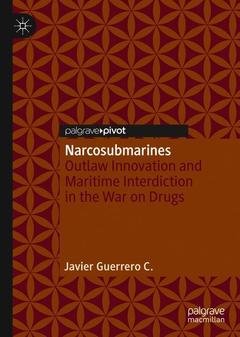Description
Narcosubmarines, 1st ed. 2020
Outlaw Innovation and Maritime Interdiction in the War on Drugs
Author: Guerrero C. Javier
Language: English
Subjects for Narcosubmarines:
Approximative price 52.74 €
In Print (Delivery period: 15 days).
Add to cart98 p. · 14.8x21 cm · Hardback
Description
/li>Contents
/li>Biography
/li>Comment
/li>
Provides an original contribution to the literature on outlaw innovation, the nature of military innovation, and the importance of antagonistic relationships in driving technological change
Supplies new evidence that traditional accounts based upon co-evolutionary explanations fall short in explaining antagonistic relationships when actors are confronted with a high degree of uncertainty, and face barriers to innovations such as the illegality of their actions
Proposes that innovation should not be analysed regarding the technical properties of the artefacts deployed by both sides but in the dispersed character of their innovation activities
Contributes fresh insights to the growing fields of Innovation Studies and STS, concerning the role users play in the process of innovation
These books may interest you

The Outlaw Biker Legacy of Violence 160.25 €



